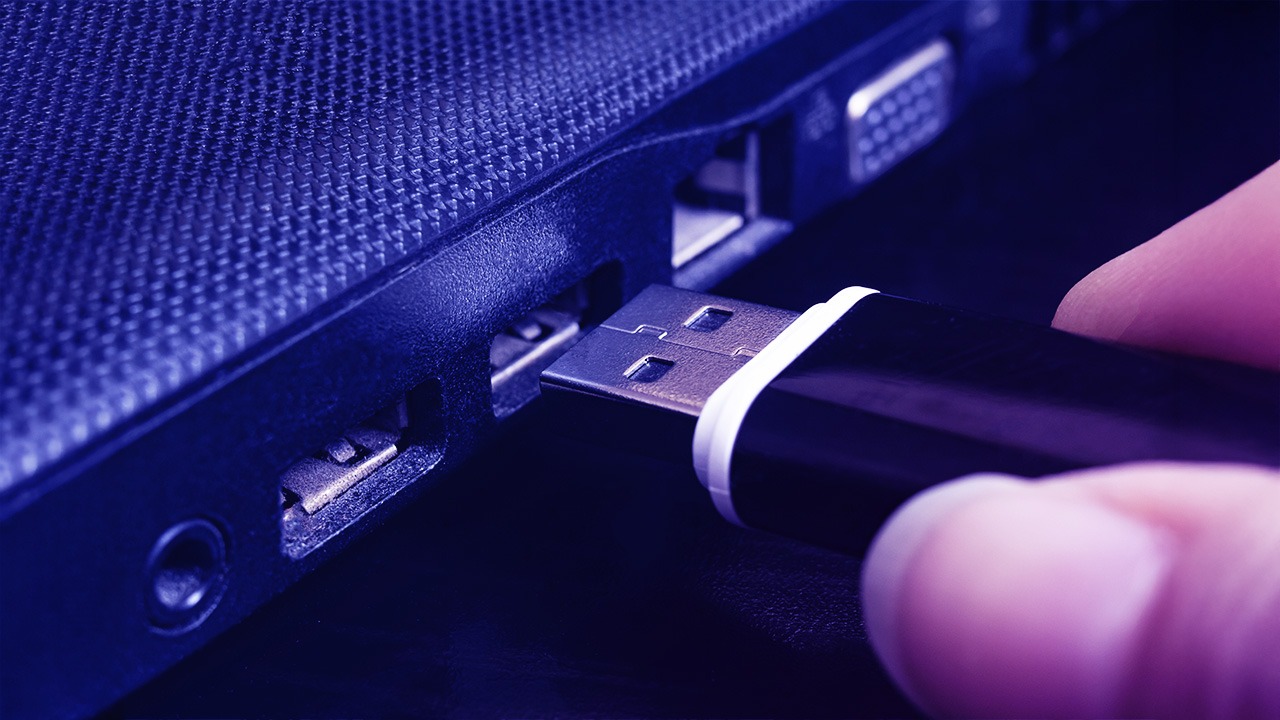Gorilla Insights / Survival Guides / Guarding Against USB Drop Threats: Network Security Essentials
Guarding Against USB Drop Threats: Network Security Essentials

Table of Contents
USB devices have been integral parts in computer systems for decades now, and they will continue to be for the foreseeable future. As we all know, they can be your best friend or your worst enemy. In just the first half of 2023, the number of USB Drop attacks increased threefold. One stray USB drive could spell disaster for your network security. Does that sound a touch dramatic? Let’s pick it up and see why USB security matters and how you can safeguard your digital realm.
What is a USB Drop Attack?
Think of USB drop attacks as digital Trojan horses. Hackers deliberately scatter infected USB devices in high-traffic areas, hoping someone will pick one up and plug it into their system. The moment curiosity wins, the malware infiltrates.
Common Scenarios
Picture this: A USB drive labeled “Confidential Payroll” lying in your office parking lot. Tempting, isn’t it? These setups are precisely what attackers count on. Another common trick is leaving infected USBs in conference rooms after meetings.
Types of Malicious USB Devices
- BadUSB: This nasty piece of tech impersonates keyboards or network devices, executing unauthorized commands.
- USB Rubber Ducky: A pen drive lookalike that can deliver malware scripts in seconds.
- Infected Storage Devices: Standard USB drives loaded with harmful files.
Real-World Incident Examples
In 2010, a USB drive carrying the infamous Stuxnet worm was allegedly used to sabotage Iran’s nuclear program. Closer to home, countless businesses have faced ransomware attacks due to employees plugging in malicious USBs.
Technical USB Safeguards
USB Port Management & Endpoint Protection
Disabling unused USB ports is like locking the unused doors of your house. It minimizes entry points for malicious USBs. Using advanced endpoint security tools, such as HMD, to automatically detect and block suspicious USB activity before damage occurs is definitely recommended.
Network Segmentation & Device Control Policies
Imagine your network as a ship with watertight compartments. If malware breaches one section, segmentation ensures it doesn’t sink the entire ship. Furthermore, maintaining strict policies that regulate USB usage, such as only allowing authorized devices, significantly reduces risks.
Administrative USB Controls
USB Usage Policies & Employee Guidelines
Establish clear guidelines that define who can use USBs, what devices are permitted, and where they can be used. Also, hold annual employee training sessions to ensure they think twice before using found USBs and that they report suspicious devices.
Visitor Device Management
Limiting or monitoring external USB device use or requiring visitors to register their devices before plugging them in can mitigate most threats from this attack vector.
Security Awareness Training
Remember that humans are your weakest link in network security, always. Including USB-related threats and safe practices during regular network security education sessions will improve overall security by a lot.
Detection and Response
Monitoring Systems & Alert Mechanisms
Set up systems to monitor USB activity across your network. The faster you detect anomalies, the better. Automated alerts ensure immediate action when a potential threat is detected.
Incident Handling Procedures & Evidence Preservation
Create a response plan detailing steps to contain, investigate, and mitigate USB-borne attacks. Properly document and preserve evidence for legal or forensic investigations.
Additional Practices and Further Prevention
Physical Security Measures
It may add a minute or two to gain physical access to sensitive USB devices when they needed, but controlling access by locking them up in a safe or locked room/drawer and ensuring unused ports are covered will all but guarantee they remain untampered.
Alternative File Transfer Methods
Do your teams collaborate often? Promote secure file-sharing platforms instead of relying on USBs. It is often faster, more collaborative, and more secure to work as a team on cloud files.
Secure USB Usage Protocols
If USBs are simply unavoidable, invest in encrypted drives and mandate their use within secure environments.
Conclusion
USB security has been a necessity for a long time, as just one malicious USB device can wreak havoc on your network. However, with the right safeguards in place—both technical and administrative—you can stay ahead of these threats. The key is vigilance, awareness, and a proactive approach to endpoint security.
FAQs
- What is a USB drop attack?
A USB drop attack is a technique where attackers plant malicious USB drives in places where they are likely to be found and used, leading to malware infiltration. - How can businesses prevent USB-borne threats?
Implement USB port management, enforce usage policies, use endpoint security tools, and conduct regular employee training. - Are all USB devices risky?
Not all, but unauthorized or found USB devices carry significant risks. Even legitimate-looking devices can be compromised. - What’s the role of network segmentation in USB security?
Network segmentation helps isolate infected systems, preventing malware from spreading across the entire network. - Can encrypted USB drives eliminate risks?
Encrypted drives add a layer of security but aren’t foolproof. Complement them with broader USB security measures for best results.